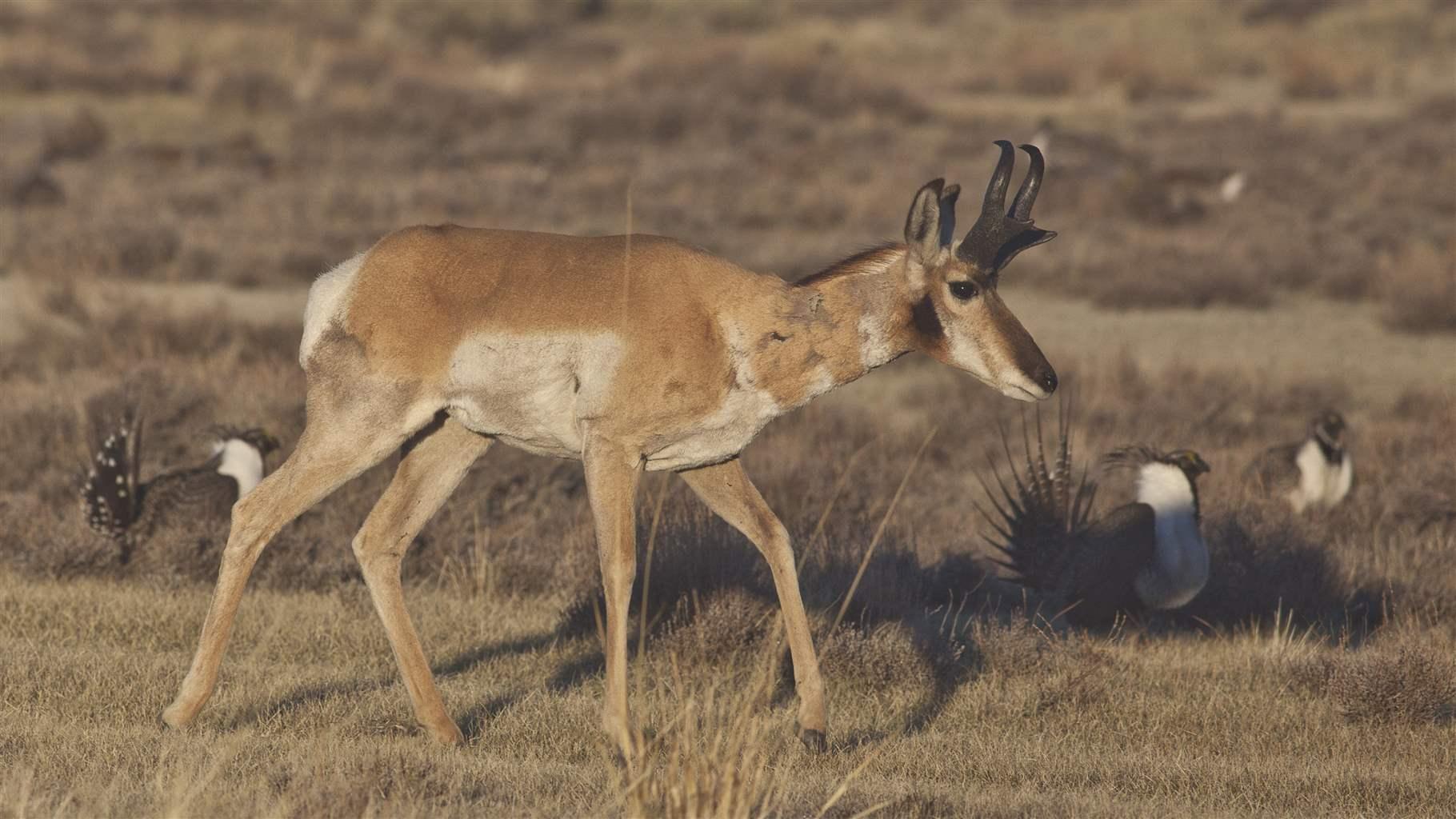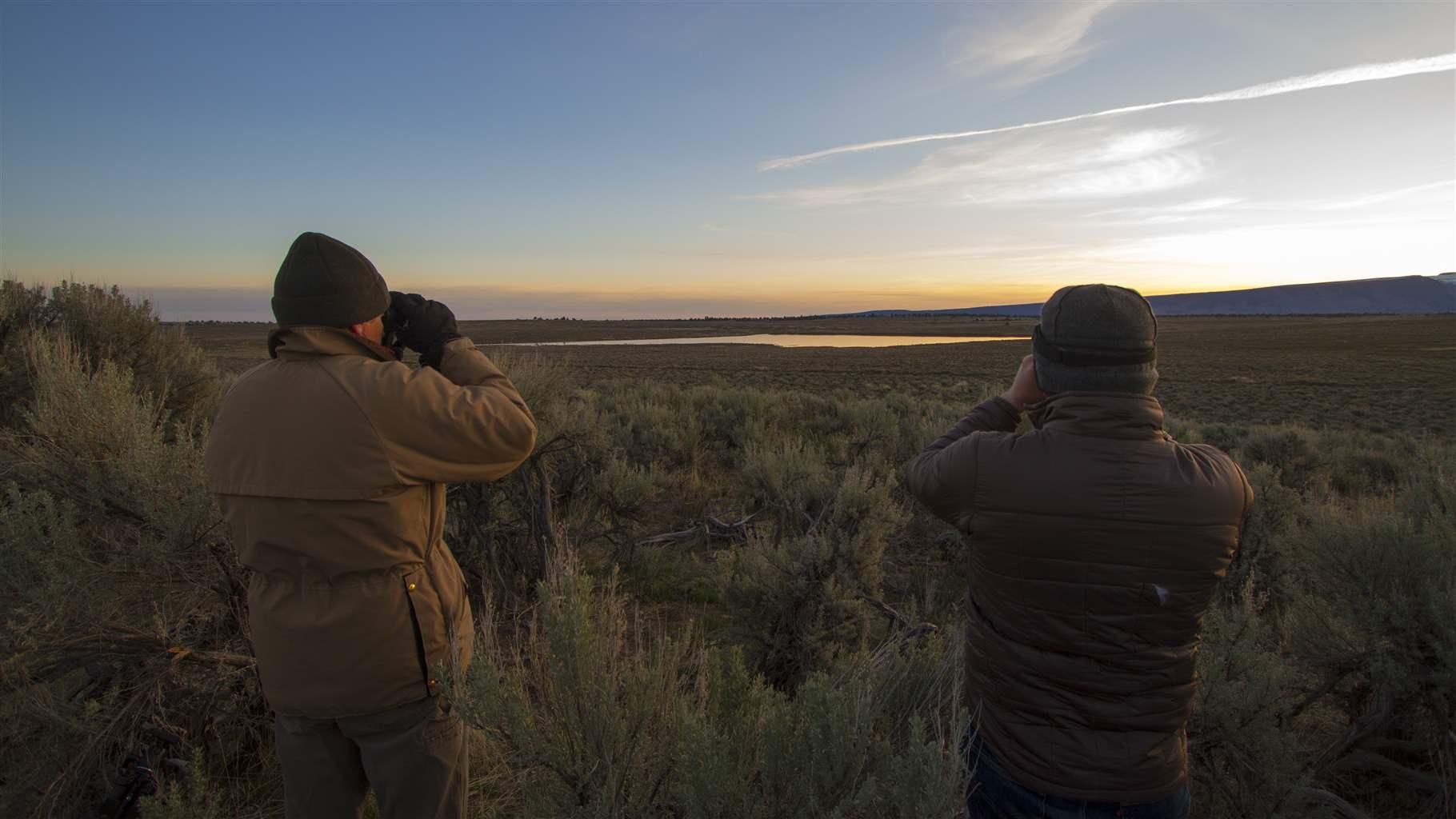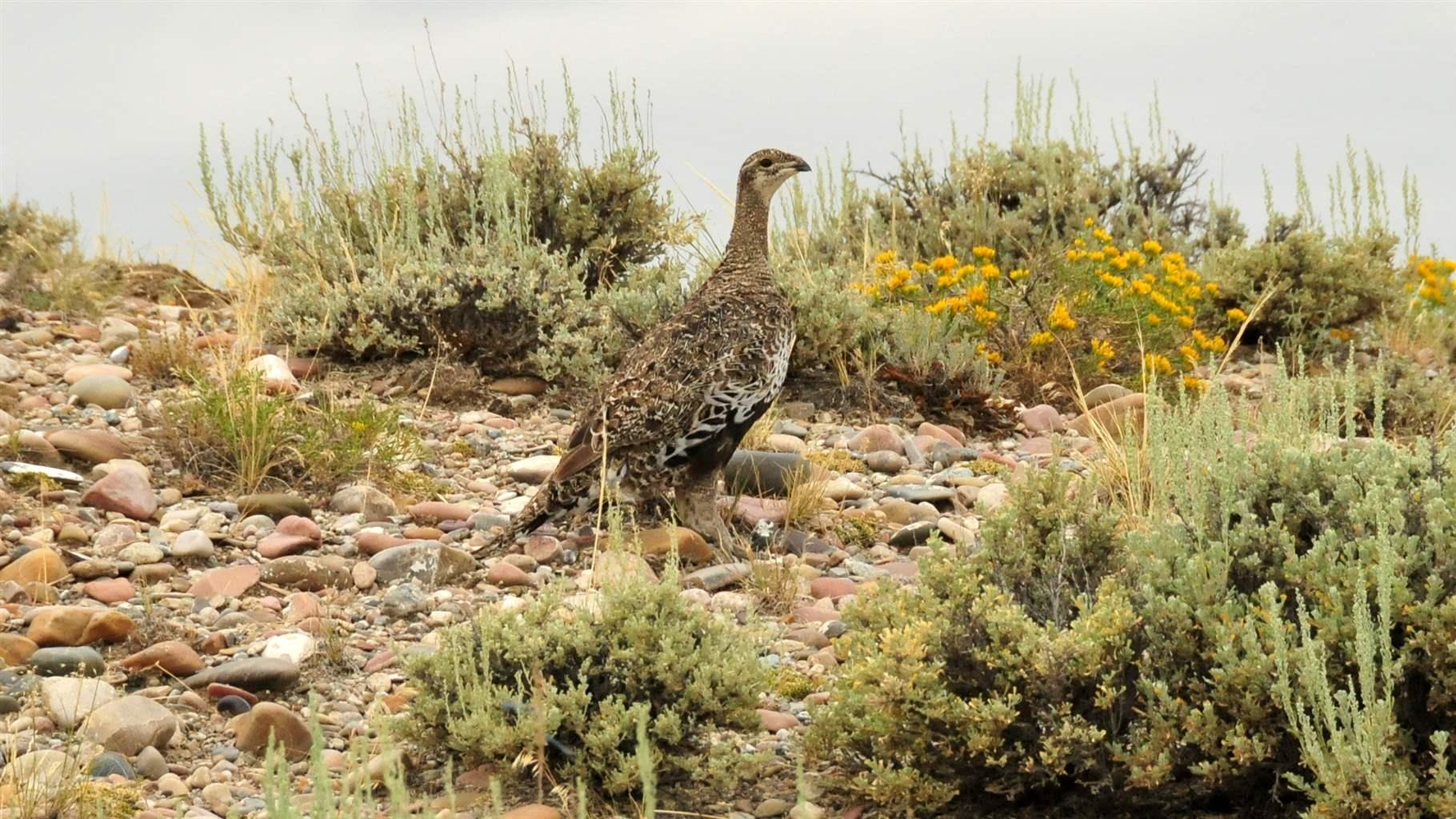Infrastructure Funding Can Help Restore Damaged Western Sagebrush Ecosystem
Land management changes could set course to healthier and resilient landscape

The sweet smell of sage, wide open vistas, and migrating wildlife are some of the distinctive features of the sage-steppe landscape. Encompassing approximately 120 million acres in the Intermountain West, which stretches from the Rocky Mountains in the east to the Cascade and Sierra Nevada ranges in the west, the sagebrush biome has shrunk by half during the past century and is considered one of the most imperiled ecosystems in North America.
Although sagebrush ecosystems and the 350 species they support are at a crossroads, state and federal policymakers have unprecedented opportunities to both conserve the best of this habitat and to restore the rest. The first opportunity is a draft rule that the Bureau of Land Management (BLM) is expected to soon release, which will guide future management of greater sage-grouse habitat on public lands in the West. The second opportunity is to quickly deploy funding—from the more than $1 billion approved under the Infrastructure Investment and Jobs Act of 2021 (IIJA)—to rehabilitate damaged sage-steppe.
Despite their incredible wealth of biological diversity, sagebrush habitats face a variety of threats, including conversion to agriculture, invasive plant species, energy extraction, rural expansion, and intense grazing pressures—all of which can reduce, degrade, or fragment habitats.
Improving conservation of sagebrush steppe fits squarely within the national policy goal to combat climate change and sustain biodiversity by protecting 30% of the nation’s eligible lands and waters by 2030. Western rangelands are vast and store over 25% of the carbon found in Western ecosystems; this is significant, as carbon is better off in the ground than released as emissions. With extreme weather events such as drought and fire on the rise, along with landscape-scale changes such as encroachment by nonendemic species and land-use conversion, the protection of existing carbon stored in rangelands is more important than ever.
Because of the biological diversity that these lands harbor, their carbon sequestration potential, and their climate resiliency, conservation and restoration of sagebrush habitat is a high priority to combat climate change. The BLM, which manages almost 70 million acres of the remaining sagebrush habitat, holds the keys to the sage-steppe’s future. The agency is in the process of strengthening its 2015 management plans based on recent science showing that sage-grouse populations have continued to decline in some areas and that various factors—including the effects of climate change—have hindered habitat conservation and restoration.
In March, a bipartisan group of eight Western senators wrote a letter to Interior Secretary Deb Haaland, urging her to provide a significant portion of the department’s IIJA allocation for sagebrush ecosystem restoration to boost wildfire mitigation, create jobs, and support regional economies. For instance, allowing cheatgrass and other invasives to persist in the fire-damaged sage-steppe, rather than promoting native species like bunchgrass, raises both the likelihood and intensity of wildfires. Without careful stewardship of Western rangelands, fires here may become more intense, frequent, and destructive.
The Pew Charitable Trusts has been involved in efforts to conserve sage-grouse habitat for the past decade, elevating the voices of the science community as we advocate for the strongest possible protections, conducting economic studies to assess the value of recreation and wildlife across this biome, and educating the public and policymakers on the importance of its conservation. Pew is committed to continued collaboration with federal agencies, states, and stakeholders to promote healthy sagebrush ecosystems that can sustain biodiversity and provide climate resilience.
Ken Rait oversees The Pew Charitable Trusts’ Western land conservation work.








